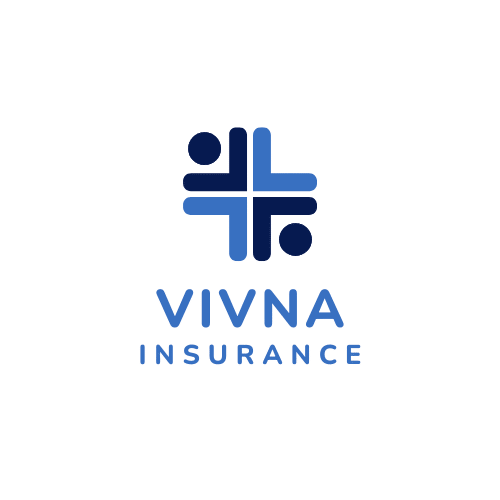Vision Insurance Coverage — What It Is, Why It Matters, and How to Choose the Right Plan
Vision insurance coverage plays an essential role in protecting long-term eye health. Because eyesight changes over time, choosing the right vision plan can help reduce expenses, improve wellness, and provide access to ongoing preventive care. Although standard medical insurance may cover injuries or eye disease treatment, it does not typically include routine exams, prescription eyewear, or preventive services. Therefore, vision insurance coverage provides an added layer of support that contributes to overall health, confidence, and long-term comfort.
Understanding vision insurance coverage allows individuals and families to make informed decisions about care needs. Since coverage options vary by provider, employer plans, and individual policy choices, reviewing available benefits ensures you select a plan that aligns with lifestyle and budget. To explore vision and supplemental solutions, visit Vivna Supplemental Insurance. In addition, reviewing eye health resources from NIH.gov, CDC.gov, and AOA.org can help support confident decision-making.
SECTION 1 — Comprehensive Guide to Understanding Vision Insurance Coverage
Vision insurance coverage supports routine eye care and reduces out-of-pocket spending on exams, glasses, contact lenses, and other corrective solutions. While many individuals use standard medical insurance for major eye issues, medical plans generally do not cover routine exams, making vision insurance coverage a valuable complement to health insurance. Because regular eye exams help detect early signs of disease, tracking eye health can significantly improve outcomes.
Vision insurance coverage plans come in many forms. Some are offered through employers, while others are available independently. Program structures vary by provider, such as VSP, EyeMed, Davis Vision, Spectera, and others. Because these plans can differ significantly in benefit levels, frequency limitations, and allowable expenses, reviewing options carefully leads to improved long-term savings and care outcomes. To learn more about holistic care solutions, visit Vivna Health Insurance.
Routine Eye Exams and Preventive Care
Routine eye exams play an essential role in long-term wellness. Vision insurance coverage makes these visits more accessible by reducing expenses and encouraging early detection. Because subtle vision changes can go unnoticed, regular check-ups help identify issues like cataracts, glaucoma, and macular degeneration. Resources such as CDC Vision Health emphasize the importance of preventive care for maintaining quality of life.
Prescription Eyewear Benefits
Prescription glasses and contact lenses can be expensive. Vision insurance coverage helps reduce costs and ensures access to comfortable, high-quality eyewear. Because lifestyle factors — including time spent outdoors, screen exposure, and athletic activity — influence lens selection, having coverage that supports specialized lenses can significantly improve visual outcomes.
Many plans include an annual allowance toward frames or contacts, which may be used toward specialty features such as polarized lenses, transition coatings, or anti-reflective enhancements. These add-ons may improve clarity, reduce glare, and enhance performance in various environments. This flexibility helps individuals remain comfortable and confident regardless of daily conditions.
Why Vision Insurance Coverage Saves Money
Vision insurance coverage helps reduce long-term expenses by supporting preventive care and lowering the cost of eyewear. Without coverage, frames, lenses, and specialty options can exceed $1,000. In addition, consistent eye exams help identify early signs of problem areas before they become more serious. Through early detection and strong care planning, individuals can maintain visual performance, support driving safety, and protect their overall health.
Peace of Mind with Vision Insurance Coverage
Vision insurance coverage also offers peace of mind. Because many eye diseases do not present early symptoms, routine exams allow early discovery and timely treatment. In addition, vision insurance supports comfort by helping individuals update eyewear and receive necessary corrections. When combined with broader supplemental benefits, vision coverage supports family health from a financial and medical perspective. To explore supplemental and medical solutions, visit Vivna Insurance.
Who Should Consider Vision Insurance Coverage?
Vision insurance coverage benefits nearly everyone, especially individuals who wear corrective lenses. Because yearly or bi-annual exams help detect vision changes, maintaining consistent care can preserve clarity and reduce aging-related issues. In addition, children and working-age adults benefit from regular screenings due to prolonged digital screen exposure. Ultimately, those seeking budget control and preventive support should consider enrolling in a vision plan.
How to Choose a Vision Insurance Coverage Plan
Selecting a strong vision insurance coverage plan requires reviewing several key factors, including provider networks, eyewear allowances, exam frequency, and premium costs. Individuals should evaluate whether a plan supports out-of-network needs, contact lens benefits, or specialized lenses. Online research from reputable sources such as CMS.gov and KFF.org can help clarify options. For personalized assistance, visit Vivna Contact Us.
Vision Coverage Formats
Vision insurance coverage plans generally fall into two categories: vision benefit plans and discount programs. Benefit plans cover a percentage of costs associated with exams and eyewear. Meanwhile, discount programs reduce retail pricing but require individuals to pay the remaining amount. Because needs vary, selecting a format that aligns with family size, exam frequency, and eyewear usage leads to better long-term savings.
Out-of-Pocket Savings
Vision insurance coverage helps lower overall costs by contributing toward exams, hardware, and specialized lenses. When combined with supplemental health and dental plans, individuals benefit from full-spectrum support. To understand additional care resources, review DOL.gov Health Coverage.
Children and Family Care
Consistent vision care supports children’s academic performance and development. Because young individuals may struggle to recognize gradual vision changes, yearly exams help identify learning barriers early. Vision insurance coverage also supports families by making exams and corrective eyewear more affordable.
Updating Prescription Eyewear
Over time, vision changes as the eyes age. Updating glasses or contacts ensures clarity and safety. Vision insurance coverage supports safety during daily tasks, including driving and work. Because contact lens wearers often require more frequent updates, coverage simplifies ongoing care planning.
SECTION 2 — FAQ
Q: What does vision insurance coverage include?
A: Most plans include routine exams, glasses, and contact lenses.
Q: Does vision insurance cover corrective surgery?
A: Some plans include LASIK discounts; details vary by provider.
Q: Do I need vision insurance if I don’t wear glasses?
A: Exams detect early issues, so coverage remains helpful.
Q: Can children use vision insurance coverage?
A: Yes — consistent exams support learning and development.
Q: How often can I update my eyewear?
A: Most plans allow annual updates, though benefits differ.
SECTION 3 — CONTACT US
Vision insurance coverage delivers long-term support by lowering expenses, promoting wellness, and improving quality of life. At Vivna Insurance, licensed professionals guide individuals through selecting health, dental, and vision solutions that align with wellness priorities and budget.
Call 888-730-6001 or visit Vivna Contact Us to explore vision insurance coverage options today.

